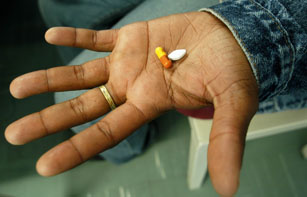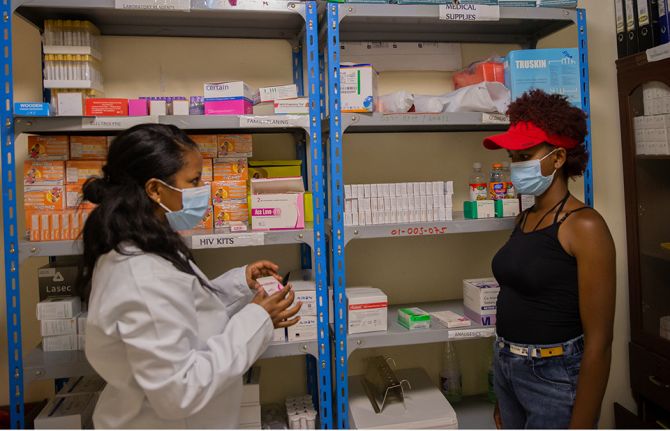
Feature Story
HIV treatment: Reducing deaths, illness and HIV infections while keeping costs down
07 June 2011
07 June 2011 07 June 2011
Credit: WHO
On the eve of the 2011 General Assembly High Level Meeting on AIDS, a side event on HIV treatment was organized by MÉdecins Sans Frontières (MSF) in collaboration with the African Union Permanent Observer Mission to the United Nations.
The opening remarks were given by H.E. Mr Téte António, Permanent Observer, African Union and the moderated discussion was chaired by Morolake Odetoyinbo of Positive Action for Treatment Access, Nigeria.
Bernhard Schwartländer, UNAIDS Director, Evidence, Strategy and Results Department was an invited speaker and the other panellists included the Director General of the National Department of Health, South Africa, Malebona Precious Matsoso; Nelson Otwoma from Network of People Living with HIV/AIDS in Kenya (NEPHAK); Dr Direu Greco, Director of the National HIV/AIDS Department, Ministry of Health, Brazil; and Sharonann Lynch, MSF.
On 3 June a new investment model developed by Dr Schwartländer and colleagues was published in The Lancet. The new framework proposes a paradigm shift in the way AIDS funding is approached, with a greater emphasis on priority setting and optimization of AIDS responses, a shift to community mobilization to deliver programmes and greater synergies between programme elements. Implementing the model would require 30% more funding than currently available when expenditure would be projected to peak, in 2015.
Dr Schwartländer presented the framework which show that the implementation of the new investment framework would avert 12.2 million new HIV infections and 7.4 million deaths from AIDS between 2011 and 2020 compared with continuation of present approaches, and result in 29.4 million life-years gained. The framework is cost effective at $1 060 per life-year gained, and the additional investment proposed would be largely offset from savings in treatment costs alone
UN General Assembly High Level Meeting on AIDS
Thirty years into the AIDS epidemic, and 10 years since the landmark UN General Assembly Special Session on HIV/AIDS, the world has come together to review progress and chart the future course of the global AIDS response at the 2011 UN General Assembly High Level Meeting on AIDS from 8–10 June 2011 in New York. Member States are expected to adopt a new Declaration that will reaffirm current commitments and commit to actions to guide and sustain the global AIDS response.



